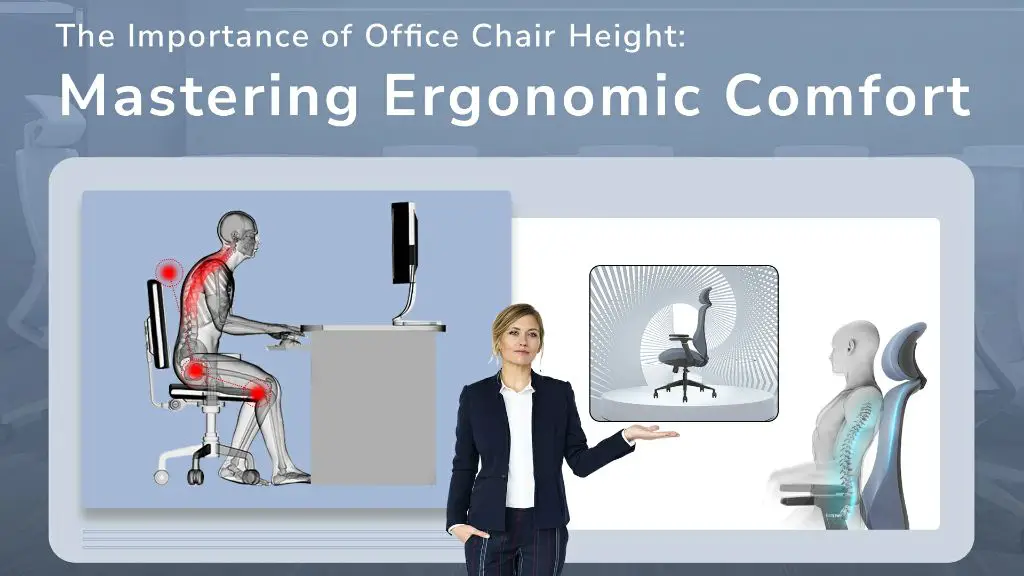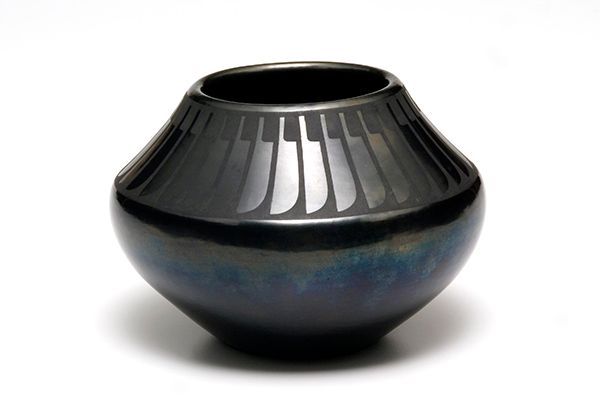What Chair Is Best For Standing Desk?
In recent years, standing desks have risen in popularity as research has demonstrated their health benefits compared to sitting for prolonged periods. One study noted standing desk users reduced sitting time by over an hour per day on average (https://www.ncbi.nlm.nih.gov/pmc/articles/PMC8582919/). Standing desks help combat the negative effects of sedentary jobs, where workers spend nearly 75% of their workday sitting down. Standing while working has been shown to burn more calories per hour compared to sitting tasks like typing or watching TV (https://www.health.harvard.edu/blog/the-truth-behind-standing-desks-2016092310264).
With the many benefits of standing desks, from weight loss to reduced back pain, it’s important to have the proper chair to optimize comfort and ergonomics. The right standing desk chair provides support while allowing the flexibility to switch between sitting and standing throughout the day. This article will discuss the key features to look for in a standing desk chair and provide recommendations on the best options currently available.
Proper Ergonomics
When using a standing desk, it’s important to maintain proper ergonomics to avoid pain or injury. The ideal monitor height for a standing desk is such that the top of the screen is at or slightly below eye level. This helps promote a neutral neck posture without excessive bending up or down (Mastering Desk Ergonomics).
For the keyboard and mouse, arms should be relaxed at the side, elbows bent to 90 degrees, with wrists straight and neutral. Forearms should be parallel to the floor (Quora). This may require using a keyboard tray or arm rests on the chair.
Having the chair at the proper height is also critical. The height should be adjusted such that thighs are parallel to the floor and feet are flat. This takes pressure off the back of the knees and promotes circulation (Mastering Desk Ergonomics).
With monitors, keyboards, chairs, and other components properly adjusted, standing desk users can maintain proper posture and avoid discomfort.
Must Have Chair Features for a Standing Desk Chair
When selecting a standing desk chair, there are a few key features to look for in order to maximize comfort, support, and ergonomics:
Seat Height Adjustability
An adjustable seat height is crucial for a standing desk chair to accommodate different users and tasks. The seat height mechanism should offer a wide range adjustment, often from around 22″ to 33″ high. This allows the chair to be positioned at the optimal height for typing or viewing monitors whether you are sitting or standing at the desk (Source).

Lumbar Support
Proper lumbar support helps maintain the natural curve of the spine and prevent lower back pain that can occur from long periods sitting. Look for a standing chair with an adjustable lumbar mechanism to customize the amount of lower back support (Source).
Cushioning/Padding
The seat and backrest cushioning play a key role in comfort. High density foam or gel cushions allow for comfort and support whether sitting upright or reclining. Avoid chairs with little padding as these can cause discomfort during long work sessions (Source).
Types of Standing Desk Chairs
There are several types of chairs that can be used with standing desks, each offering different benefits and levels of support. Some popular options include:
Kneeling Chairs
Kneeling chairs, also known as kneeling stools, tilt the pelvis slightly forward to promote an open hip angle that takes pressure off the lower back. They engage core muscles to improve posture and strengthen the back over time (https://www.startstanding.org/standing-desks/best-chairs-stools/).
Saddle Chairs
Saddle chairs have a raised pommel reminiscent of a horse saddle that supports the thighs while angling the hips to improve spinal alignment. They allow for open hip angles and engage core muscles like kneeling chairs. The design also facilitates movement while seated (https://thestandingdesk.com/chair-for-standing-desk/).
Drafting Chairs
Drafting chairs, also known as drafting stools, have seat pans that can be raised to bring users closer to standing desk height. They usually have foot rings for comfort and to prevent the chair from rolling away when in a higher position. Drafting chairs provide flexible support whether sitting or standing (https://www.autonomous.ai/ourblog/20-popular-standing-desk-chairs).
Active Sitting Chairs
Active sitting chairs are designed to engage muscles and encourage movement while seated. Options like balance ball chairs and core exercise chairs make users engage their core and leg muscles to maintain balance and proper posture. This facilitates small movements that boost energy and focus.
Best Kneeling Chairs
Kneeling chairs are a popular ergonomic seating option for standing desks. They reduce pressure on the spine by tilting the pelvis forward. This improves posture and strengthens core muscles. Here are three top kneeling chair options:
Varichair
The Varichair is designed to keep your body constantly moving and engaged while you work. Key features include:
- Adjustable kneeling angle and seat height
- Waterfall seat edge to reduce pressure
- Rounded base allows rocking
Pros: Excellent for engaging core muscles and promoting movement. Fully adjustable.
Cons: Expensive. May take time to get used to rocking motion.
Sleekform
The Sleekform offers a simple but well-designed kneeling chair. Key features:
- Contoured knee pads provide stability
- Breathable mesh backrest
- Thick cushioning for comfort
Pros: Very affordable. Sturdy and stable. Good back support.
Cons: Limited adjustments. Fixed seat angle may not suit everyone.
DRAGONN
The DRAGONN kneeling chair provides a balance of comfort, support and affordability. Key features:
- Adjustable seat angle, height and knee pads
- Rolling caster wheels for movement
- Breathable mesh and thick cushions
Pros: Fully adjustable. Good lumbar support. Smooth rolling wheels.
Cons: Wheels can slide on hard floors. Less stable than fixed-base options.
Best Saddle Chairs
Saddle chairs are a unique option for standing desk users. These chairs have no backrest, and instead feature a saddle-like seat that forces you into an open hip angle of up to 70-90 degrees. This promotes an upright yet dynamic sitting position.
Here are the top 3 saddle chair options to consider for your standing desk:
Fellowes Aero Saddle Chair
The Fellowes Aero saddle chair has a cushioned memory foam seat that conforms to your body for comfort. It uses a breathable mesh material to keep you cool. The open leg design encourages active sitting. The seat tilts from -5 to +15 degrees and can swivel 360 degrees. The Aero chair has a weight capacity of 300 lbs.
Pros: Cushioned seat, breathable mesh, promotes active sitting, seat tilts and swivels
Cons: May not be ideal for long periods of sitting, limited adjustments
SitRite Posture Saddle Chair
The SitRite Posture saddle chair is designed to improve your posture by positioning your hips above your knees. It has a contoured saddle seat and waterfall front to reduce pressure. The backless design engages your core. It can swivel 360 degrees and supports up to 250 lbs.
Pros: Posture-improving design, contoured seat, engages core
Cons: Takes time to adjust to, limited weight capacity
Modway Engage Saddle Chair
The Modway Engage features a rounded split saddle seat that provides thigh support and open hip angles up to 135 degrees. It has a gas lift adjustable height and 5 hooded casters for easy movement. The synthetic leather seat and chrome base support up to 331 lbs.
Pros: Split seat design, fully adjustable, mobile casters
Cons: Synthetic leather may not breathe well, takes time to get used to
Best Drafting Chairs
Drafting chairs are designed for extended sitting with maximum adjustability and ergonomic support. Here is an overview of the top 3 drafting chair options for standing desks:
Autonomous ErgoChair Pro
The Autonomous ErgoChair Pro is highly adjustable with up to 8 points of articulation. It provides great lumbar support and breathable mesh material. Pros are excellent ergonomics and strong weight capacity. Cons are the high price point and lack of headrest.
Modway Edge Drafting Chair
The Modway Edge chair has adjustable tilt tension and one-touch height adjustment. It’s very affordable while still offering good ergonomic support. Pros are budget-friendly price and versatile design. Cons are less adjustability than premium chairs and weight capacity limited to 264 lbs.
Office Star Deluxe Mesh Drafting Chair
The Office Star Deluxe chair provides a breathable mesh back along with built-in lumbar support. It has flip-up arms to allow you to get closer to your desk. Pros are great back support and a mid-range price. Cons are the arms are fixed and it lacks more sophisticated adjustments.
Best Active Sitting Chairs
Active sitting chairs allow you to seamlessly transition between sitting and standing throughout the day. They engage your core and leg muscles while sitting, reducing lower back strain and improving posture. Here are the top 3 active sitting chair options for standing desks:
Varidesk VariChair Pro Plus
The Varidesk VariChair Pro Plus features a cushion seat that flexes and responds to your movements. Key features include:
- Dynamic flex seat encourages movement and engages your core
- Adjustable seat height allows you to sit or perch
- Intuitive adjustments make it easy to customize
Pros: Encourages active sitting. Fully adjustable.
Cons: Expensive. Can take time to get used to flexing seat.
Fully Cora Chair
The Fully Cora Chair has a unique split saddle seat design to engage your core. Key features:
- Two-part saddle seat supports thighs and improves posture
- No pressure points for all day comfort
- Swivels and adjustable height for flexibility
Pros: Great for active sitting and posture. Budget-friendly price.
Cons: Unusual saddle design isn’t for everyone. Limited adjustability.
Steelcase Gesture Chair
The Steelcase Gesture Chair allows you to sit or recline. Key features:
- 3D LiveBack technology flexes with your spine
- Adjustable seat depth and tension
- Arm adjustments for personalized support
Pros: Superb comfort and adjustments. Responsive back technology.
Cons: Very expensive. Arms prone to wobbling.
Recommendation
Based on the research into the various types of chairs well-suited for standing desks, the Varier Move Tilting Saddle Chair emerges as the best overall option.
The Move has several key advantages that make it the top choice:
- It provides excellent back support and promotes an upright, active sitting posture.
- The unique saddle seat engages your core muscles and reduces pressure points.
- It has a dynamic design that enables movement and slight tilting.
- The height is easily adjustable for proper ergonomics.
- High quality materials ensure comfort and durability.
While a bit more expensive than basic office chairs, the health benefits and ergonomic design of the Move Saddle Chair make it a worthwhile investment for standing desk users looking to avoid back pain and discomfort during long working hours.
The Move promotes movement while keeping you comfortably upright and focused. For these reasons, it is the top choice as the best chair for standing desks.
Conclusion
When choosing the best chair for a standing desk, it’s important to consider ergonomics, adjustability, and type of work. Key factors include lumbar support, seat cushioning, armrests, height range, and ability to move. The goal is to maintain proper posture and comfort when sitting periodically throughout the day.
The right standing desk chair will have features to keep your spine aligned, while allowing movement. Recommended options covered here include kneeling chairs, saddle chairs, drafting chairs, and active sitting stools. While no one chair is perfect for everyone, choosing one suited to your needs and workspace can provide ideal support.
Pairing a standing desk with the proper chair results in benefits like increased energy, reduced back pain, and improved productivity. Alternating between sitting and standing is healthier than remaining sedentary for prolonged periods. Having an adjustable chair made for standing desk height ensures proper ergonomics in both positions.





